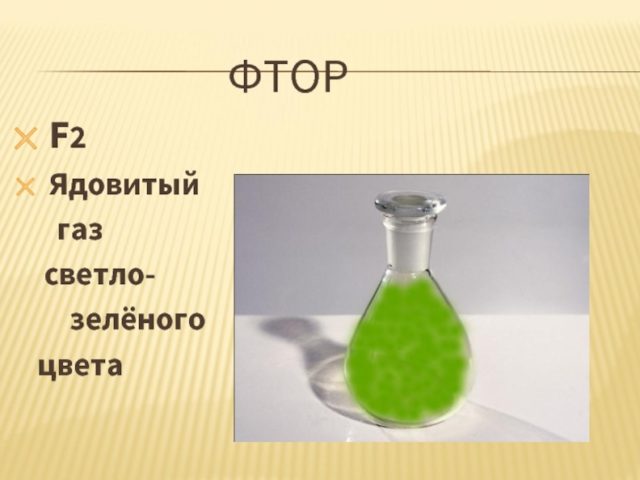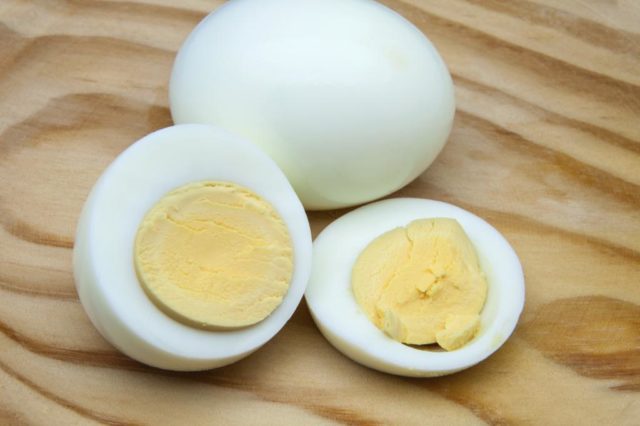Content
Fluorine is a gaseous chemical element of light green color with an unpleasant pungent odor. The strongest oxidizing agent, its name is translated from Greek as death, destruction. Despite its formidable reputation, micro-doses of this halogen are indispensable for the human body. The trace element is present in all organs and tissues, and 96% is concentrated in the bones of the skeleton and teeth. Foods rich in fluorine make it possible to fully compensate for the deficiency of this trace element. An excess of a toxic substance is as dangerous as its complete absence, so caution should be exercised, especially when using artificially fluorinated products.

What foods contain fluoride
Fluoride present in food is easily absorbed by the human body and is involved in the following processes:
- strengthens and nourishes bones with essential minerals;
- ensures the formation of tooth enamel and its hardness;
- in case of fractures, it helps bones to grow together;
- promotes healthy hair and nails;
- strengthens the immune system;
- removes heavy metals, toxins and radiation from the body, prevents the formation of cancer cells;
- promotes proper muscle function;
- reduces acidity in the mouth and stomach, preventing the development of gastritis.
Most of the available trace element enters the human body with ordinary water. In regions where water and soil are poor in fluorine, artificial fluoridation is practiced. The remaining third of the microelement comes with food, where its concentration in the form of fluorides is negligible. That is why, with a chronic lack of a substance, doctors prescribe not a diet, but a course of fluorinated drugs.
An excess of a trace element in the body is accompanied by the following symptoms:
- slowing growth, curvature of bones;
- cessation of cell division and general weakness;
- drowsiness, nausea and urge to vomit;
- dermatitis, skin rashes;
- hoarseness and complete loss of voice;
- uncontrolled trembling of fingers, convulsions;
- bleeding gums;
- difficulty breathing and low blood pressure;
- muscle and joint pain;
- a cough that resembles advanced pneumonia or bronchitis;
- severe abdominal pain, diarrhea;
- falling into a coma.

Products containing high amounts of fluoride
In microscopic doses, fluoride is present in almost all foods. Its highest content is found in water, some plants, molluscs and ocean fish.
Tea
The tea shrub, regardless of the growing region, actively consumes fluoride from soil, fertilizers and water, and concentrates it in its leaves. That is why black and green tea is one of the recognized leaders in the content of this trace element. It should be noted that brewing a drink in boiling water significantly reduces the percentage of fluoride.When preparing decoctions from spicy and medicinal herbs, up to 50% of the trace element passes from the raw material into the solution.
A fish
A particularly large amount of fluoride is found in the bones of marine fish. Therefore, eating canned foods along with bones is of great benefit. A significant percentage of fluoride is found in the following seafood:
- oysters, mussels, crayfish;
- salmon, mackerel;
- tuna, cod, pollock;
- hake, blue whiting;
- haddock, flounder, rudd;
- smelt, lemonema, bream;
- mackerel, bluefish, horse mackerel;
- trout, sprat, capelin;
- ruff, crucian carp, white fish;
- scallop.
Fish products can be eaten salted, smoked, boiled and fried. It should be remembered that fillet is less useful than carcass with bones.

Meat
The main percentage of fluoride is found in the bones of animals and birds raised for slaughter. Therefore, broth cooked on the bone is healthier than pure fillet. The trace element is present in the following types of meat products:
- canned meat, stew;
- beef, pork, lamb;
- by-products, sausages;
- chicken, goose.
Eggs
Any bird's eggs contain fluoride. Depending on the nesting region and diet, its amount can vary significantly. In egg powder, the content of the element increases by almost 4 times.

Cereals
Plants are able to store fluoride in water, soil and chemicals. In cereals, the trace element is present in medium doses. The substance is found in the following familiar cereals:
- buckwheat and oatmeal, including "Hercules";
- wheat, spelled, semolina, couscous;
- pasta and wheat flour;
- pearl barley and barley, polished millet;
- rice, bran and unground;
- rye flour, soybeans, corn;
- lentils and beans.
In the grain of durum wheat, fluorides are significantly higher, as in whole oats and barley.

Nuts
Only 300 g of walnuts fully meet the fluoride requirement of an adult. Other nuts containing fluoride:
- pecan;
- sunflower seeds;
- almond.
The product can be lightly dried in a skillet before use.
Vegetables
Vegetables containing fluoride include the following:
- spinach, asparagus;
- tomatoes, carrots, beets and their tops;
- radish, cabbage, including sauerkraut;
- pumpkin, avocado;
- green beans, green peas;
- potatoes, onions;
- leaf salad;
- cucumbers, parsley, garlic.
A significant amount of fluoride is found in such food plants as seaweed, dandelions, chamomile, rose hips, mint, and cumin.

Rules for the use of products containing fluoride
The daily norm of a trace element for an adult is 0.5-4 mg. With the normal intake of a substance with food into the body, it accumulates on average up to 3 g of the mineral, which is gradually excreted naturally. Since in food products, with the exception of water, the trace element is contained in negligible quantities, you should not be afraid of an overdose. The uncontrolled use of artificial additives is much more dangerous. 20 mg of fluoride is enough to get severe poisoning.At a dose of 10 mg per day, the destruction of bone tissue begins, and 5 mg per 1 liter of water with artificial fluoridation causes cancer.
When using products as sources of fluoride, there are several rules to be aware of and follow:
- during the heat treatment of products, a significant part of the fluorine is destroyed;
- aluminum dishes are able to completely remove fluoride contained in food, since it actively interacts with this metal;
- foods rich in fluoride and calcium are actively involved in the formation of bone tissue, hair and teeth;
- the mineral interferes with the absorption of magnesium and iodine, so foods and mineral supplements with these substances are best consumed separately.
Fluoride Products Table
Lack of a trace element in the body causes weakening of bones, destruction of tooth enamel, thinning of hair and nail plates, joint diseases and curvature of the spine, blurred vision. To avoid the unfortunate consequences, it is necessary to consume foods containing fluoride daily.
|
Product name |
Fluorine content in 100 g, mg |
|
Black, white, green tea |
20 |
|
Mackerel |
3 |
|
Tuna |
2 |
|
Mineral water |
1,5 |
|
Hake, pollock, cod, blue whiting |
1,4 |
|
Walnuts |
1,3 |
|
Horse mackerel |
1 |
|
Flounder |
0,9 |
|
Sea bream, mackerel, salmon, trout, mullet |
0,86 |
|
Oysters, scallops, crayfish |
0,86 |
|
Vobla, sprat, capelin |
0,43 |
|
Lamb, pork |
0,3 |
|
Poultry |
0,28 |
|
White wine |
0,2 |
|
Egg powder |
0,2 |
|
Chicken liver |
0,194 |
|
Eggs |
0,18 |
|
Acne |
0,16 |
|
Table wine |
0,15 |
|
Grape juice |
0,138 |
|
Soy |
0,12 |
|
Whole oats |
0,117 |
|
Grain barley |
0,106 |
|
Buckwheat groats, semolina, pasta |
0,1 |
|
Milk |
0,1 |
|
Potatoes |
0,1 |
|
Almond |
0,09 |
|
Pumpkin |
0,086 |
|
Oatmeal |
0,084 |
|
Whole grain of durum wheat |
0,08 |
|
Whole rye |
0,067 |
|
Pearl barley |
0,06 |
|
Rice groats |
0,05 |
|
Rye wallpaper flour |
0,05 |
|
Beans |
0,044 |
|
Peeled rye flour |
0,038 |
|
Beef |
0,032 |
|
Cheese, cottage cheese |
0,032 |
|
Leaf lettuce, onion |
0,029 |
|
Polished millet |
0,028 |
|
Lentils |
0,025 |
|
Ice cream |
0,015 |
|
Radish |
0,012 |
|
Powdered milk |
0,01 |
|
Carrot |
0,006 |
Conclusion
Fluoride-rich foods are frequent guests on the everyday table. Plain and mineral water, tea, cereals and meat successfully replenish the lack of a trace element in the body. The substance, getting into the body with food, accumulates in teeth and bone tissues, actively participates in the processes of growth and restoration. When using synthesized drugs and fluorinated products, it should be borne in mind that overdose can be hazardous to health.

